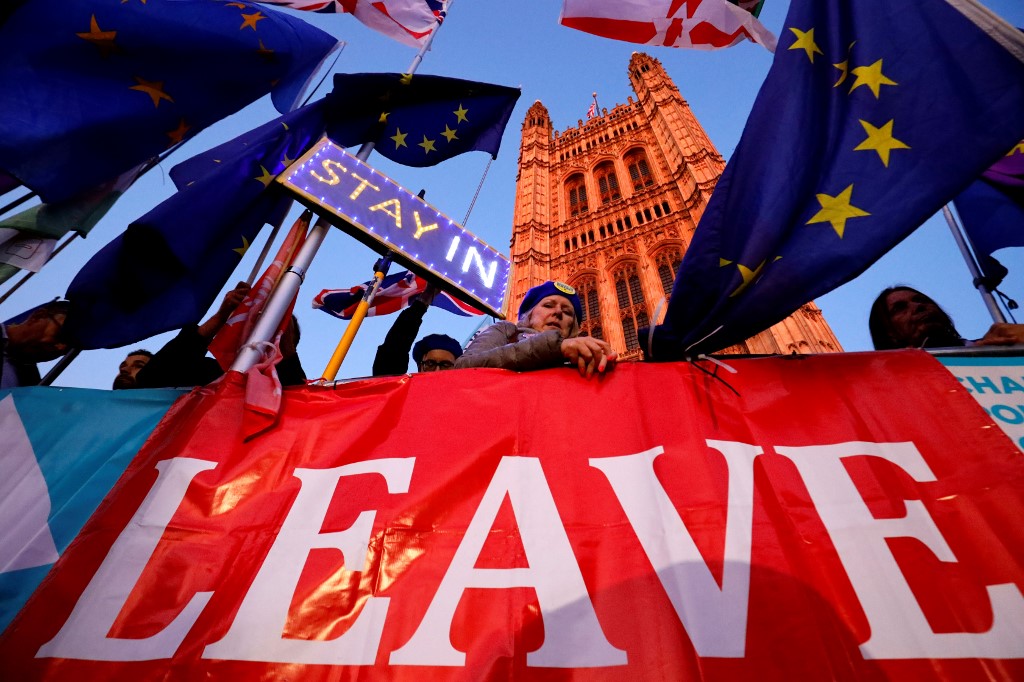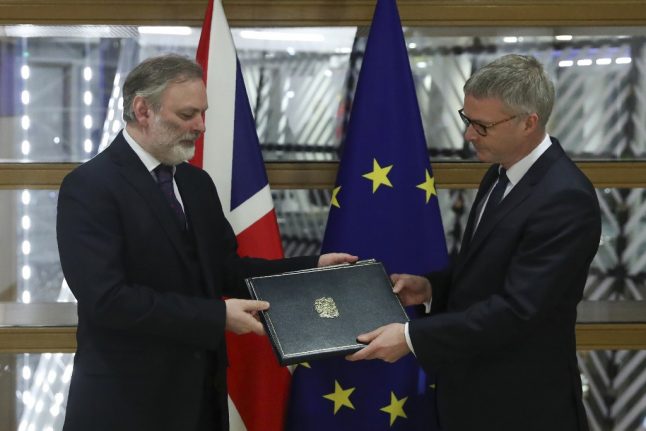I know that you’re quite probably exhausted and fed up with reading about Brexit and what it means … but don’t click away just yet because this article, one of a series, is about you and how your future life in Spain will pan out.
I can’t stress enough how important it is for us all to know exactly what’s in the Withdrawal Agreement, as it’s the international treaty that guarantees our rights for the rest of our lifetimes.
You never know when you might need to refer to it: for example, if your boss questions your employment rights, if a local bureaucrat makes life difficult, if you or your children need to go abroad for a period of time.
READ ALSO: Spain launches dedicated Brexit hotline

We’re in an unprecedented situation, where a whole new status is being conferred on 1.2 million Brits living across the EU under a brand new international agreement. And while it gives us – at last – some much-needed certainty, the devil is in the implementation … which means that knowing what the Withdrawal Agreement says about your rights and what you can expect is really important for everyone.
So while it might not be the sexiest of subjects, it’s a pretty essential one to get your head around!
What is the Withdrawal Agreement?
It’s an international agreement between the EU and the UK that sets out how the UK’s EU membership will end. It covers the status and rights of both British citizens in the EU and EU nationals in the UK, the UK’s financial obligations, how the Irish border will continue to function and a transition period.
It doesn’t cover trade or any other aspects of the future relationship between UK and EU.
It came into effect on January 31st 2020. At that point, the transition period began. This lasts until December 31st 2020 (or longer if extended) and is a kind of standstill during which EU law, including freedom of movement rules, still applies to the UK and its citizens.
A key point: the Withdrawal Agreement remains in effect, and your rights will continue to be covered by it for your lifetime, whatever happens with the trade/future relationship negotiations – even if there is ‘no deal’ at all at the end of the transition period.
Where can I read the Withdrawal Agreement?
You can read it here (this will take you directly to Part Two, which deals with citizens’ rights)
What happens to our rights during the transition period?
During this period our rights effectively remain the same as they are now (except for political and voting rights which ended on January 31st 2020, meaning that we can’t stand or vote in the upcoming municipal elections) and although we actually lost our EU citizenship on Brexit day, we will be treated like EU citizens through the whole of the transition period.
We retain all our current rights to freedom of movement throughout the transition period.
This means that during this period you can
-
Move from the UK to Spain or to any EU country. As long as you are legally resident (see here for how to do that) at the end of the transition period, your future rights will be covered by the Withdrawal Agreement; and
-
Move from Spain to another EU country. If you do this during the transition period and meet the conditions for legal residence in your new host country, your future rights there will be covered by the Withdrawal Agreement (note that your period of residence will begin on the day you arrive in your new country – you would ‘lose’ the years accumulated in Spain).
-
Get your UK professional qualifications recognised under EU rules in Spain. If you have any of these for which you haven’t yet applied for recognition, you should do this now.
How is the Withdrawal Agreement different from Spain's March 2019 Royal decree?
The no deal contingency plans and legislation that Spain and other EU countries produced relate only to a situation in which the UK leaves the EU without a Withdrawal Agreement. This is no longer going to happen, so the legislation has no legal effect and will never come into force.
Under a no deal scenario, we would have defaulted to basic third country national status immediately on exit and our future rights would have been determined by national immigration law here in Spain along with the specific contingency measures in the Royal Decree.
In this scenario UK citizens across the EU would have been treated differently according to where they lived, as each country’s no deal plans were different.
The Withdrawal Agreement is different: all its citizens’ rights provisions must be implemented in every EU country, which means that France can’t decide to treat you less favourably than another country would, either now or in the future.
The Withdrawal Agreement protects you under international law
Part 2 of the Withdrawal Agreement contains detailed provisions on citizens’ rights which will apply to all British citizens living in the EU and to EU nationals living in the UK. Every EU state must adhere to it and implement the rights in it.
This means that Spain can’t downgrade your rights from those contained in the Withdrawal Agreement, now or in the future, or impose any extra conditions to obtain or retain your rights.
The Withdrawal Agreement is an international agreement and has what’s known as ‘direct effect’. This means that the rights it contains are directly binding in national law; you can rely on them directly before the courts even if the country where you are living doesn’t apply the provisions of the agreement correctly in national law.
Any dispute is also subject to the jurisdiction of the European courts.
Who is covered by the Withdrawal Agreement?
You are covered by the Withdrawal Agreement if:
-
You are legally resident in Spain at the end of the transition period, and you continue to live here after this date. ‘Legally resident’ means that you meet the conditions that currently apply to you as an EU citizen exercising your free movement rights – find out more here.
-
You are also covered if you moved to Spain to become legally resident after Brexit day – January 31st 2020 – but before the end of the transition period, and you continue to live here after this date.
-
You are a family member of someone who meets either of the above conditions. You’re classed as a family member if your relationship to that person is that of spouse, registered partner, direct descendant (child, grandchild etc) who is under 21 OR who is older than this but dependent, or direct ascending relative (parent, grandparent etc) who is dependent.
-
You are a family member who had a derived right of residence in Spain before the end of transition following either the death or departure of an EU citizen or the divorce, annulment of marriage or termination of a registered partnership with an EU citizen in the past. This would cover situations where the past relationship was with a British or other EU citizen as well as those where you as a family member are a British or non-EU citizen.
-
If you’re a family member who doesn’t fall within the definition above (for example, a dependent brother, sister or other non-direct family member) but are already resident, or have applied for residence before the end of transition. In the first case, you’ll keep your right of residence; in the second case, the Withdrawal Agreement says that Spain has to ‘facilitate entry and residence’ and this is subject to conditions.
-
If you’re in an unregistered partnership but are in a ‘durable relationship’ and are already resident, your partner will keep their right of residence. If your partner applied for residence before the end of transition or was living outside Spain at the end of transition and applied later, Spain has to ‘facilitate entry and residence’ for that partner in accordance with its national legislation, providing the relationship was already durable at the end of the transition period. This is more stringent than the conditions for other close family members.
-
If you have children (including by legal adoption) AFTER the end of the transition period they also are covered by the Withdrawal Agreement if (a) you and the other parent are both covered by the WA; or (b) one parent is covered by the WA and the other is a national of Spain; or (c) one parent is covered by the WA and has sole or joint custody rights of the child.
Important: your rights will be covered by the Withdrawal Agreement only in the country where you are living at the end of the transition period. They are not transportable to another EU country after that time.
For a longer version of this article, please see the British in Europe website.
Kalba Meadows works with both British in Europe and France Rights, organisations dedicated to protecting the rights of British citizens living in the EU. Find out more here.
For information on driving, healthcare, travel and pets after Brexit, visit our Brexit section.




 Please whitelist us to continue reading.
Please whitelist us to continue reading.
Member comments